To create the revolving door, you will rotate the right enclosure panel temporarily into a different position, then you will create a pivot door using snaps between the hub and the right enclosure panels. You edit the material on the door, then instance the door to create a wheel of four doors.
 Select the right
enclosure panels object in the viewport.
Select the right
enclosure panels object in the viewport.
 (Select And Rotate), and then
move your mouse over the Transform gizmo tripod in the viewport. When
the Z axis (the horizontal blue circle) is highlighted, click and
drag to rotate the right enclosure panels object
45 degrees about the Z axis until it touches the left
enclosure panels object, as shown below.
(Select And Rotate), and then
move your mouse over the Transform gizmo tripod in the viewport. When
the Z axis (the horizontal blue circle) is highlighted, click and
drag to rotate the right enclosure panels object
45 degrees about the Z axis until it touches the left
enclosure panels object, as shown below.
As you rotate, you can see the rotation amount in yellow text in the viewport, just over the transform gizmo. To get the desired result, it should read (0.00, 0.00, 45.00).
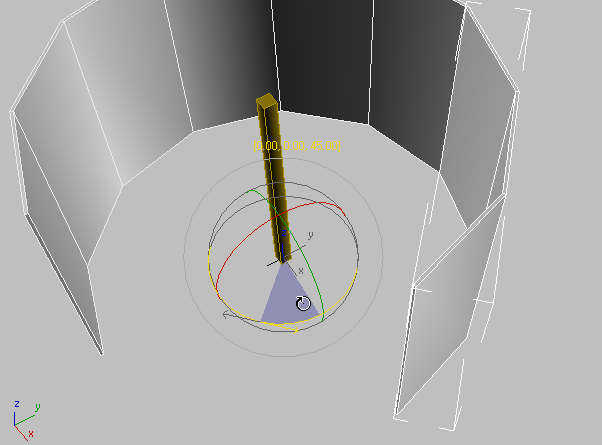
Rotate the right enclosure.
This rotation is temporary, for the purpose of modeling only.
The Doors layer is now visible in the Layer Properties field on the Layers toolbar.

 Grids And Snaps
Grids And Snaps  Grid And Snap Settings.
Grid And Snap Settings.
 Close the dialog.
Close the dialog.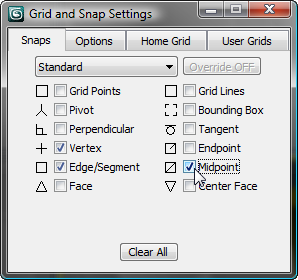
On the main toolbar, the 3D Snap button highlights.

 Create panel, click the
arrow on the drop-down list and choose Doors. On the Object Type
rollout, click Pivot.
Create panel, click the
arrow on the drop-down list and choose Doors. On the Object Type
rollout, click Pivot.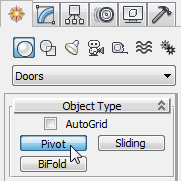
On the Create panel, the Pivot button highlights, and the pivot door Parameters rollouts appear.
You can see the blue snap icon that follows the edges of the cylinder as you move.
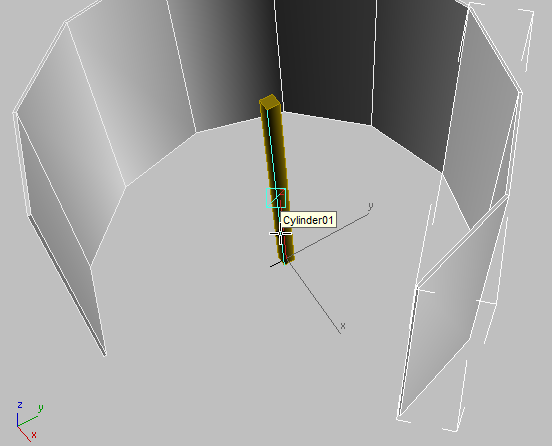

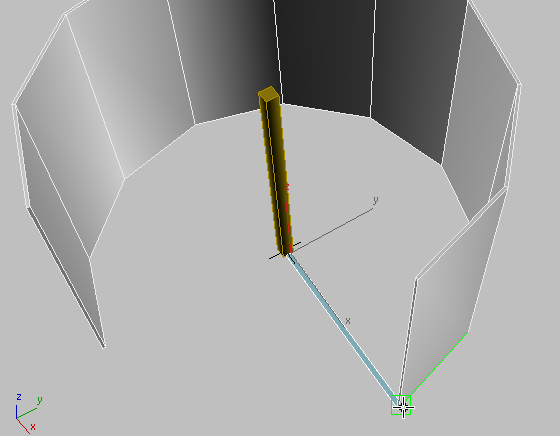
Snap to the right enclosure.
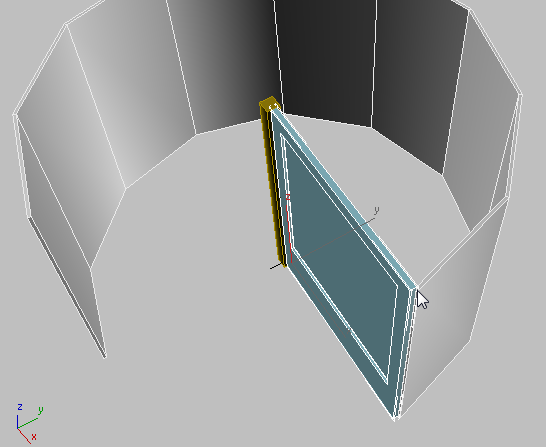
Set the Height last.
Immediately after clicking to set the height, make the following parameter adjustments, watching the effects in the viewport. You can adjust these parameters at any time in the future using the Modify panel.
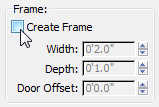
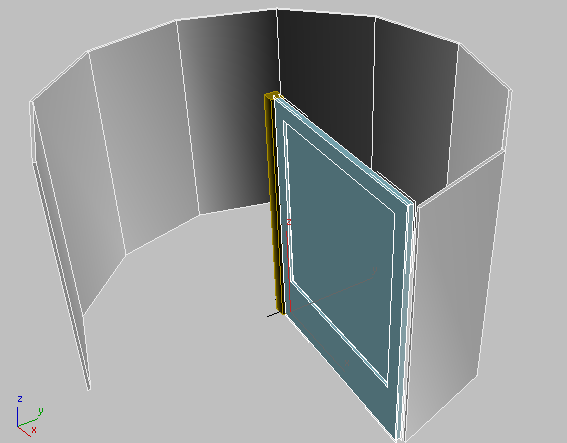
 Select the right
enclosure panels object: the one you rotated earlier
in this lesson.
Select the right
enclosure panels object: the one you rotated earlier
in this lesson.
 Rotate the sliced tube back
into place; that is, –45 degrees on the Z axis.
Rotate the sliced tube back
into place; that is, –45 degrees on the Z axis.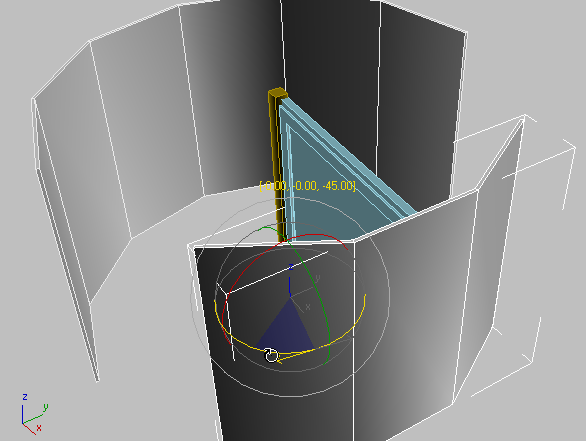

 Modify panel, reduce its
width so it fits within the space properly.
Modify panel, reduce its
width so it fits within the space properly.
You'll use a Lattice modifier to add struts to the enclosure. The glass panels will be held up by stout uprights that you will create next.
 (Select Objects In Current
Layer).
(Select Objects In Current
Layer).
This selects both enclosure objects and deselects any other objects.
 Clone.
Clone.
 Copy, and click OK.
Copy, and click OK.
3ds Max Design makes copies of the two enclosure objects and selects the copies.
 Parametric Deformers
Parametric Deformers  Lattice.
Lattice.
3ds Max Design applies the Lattice modifier to the enclosures.
 Geometry group, choose
Struts Only From Edges.
Geometry group, choose
Struts Only From Edges.
The right and left enclosure panels now are held up by struts.
 Struts group, turn on
End Caps.
Struts group, turn on
End Caps.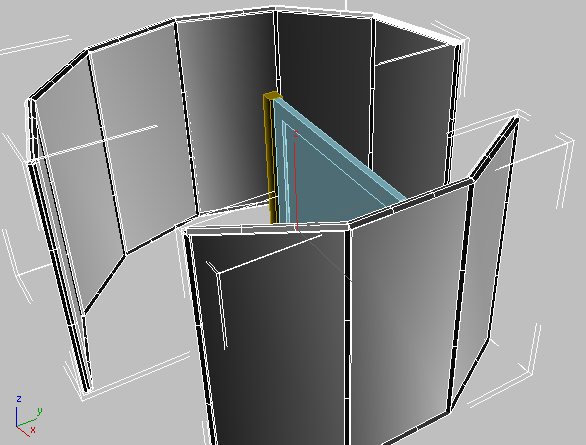
One of the objects with the Lattice modifier is named left enclosure panel001, and the other is named right enclosure panel001. You'll rename both now.
Next you'll create, apply, and edit materials for the revolving door.